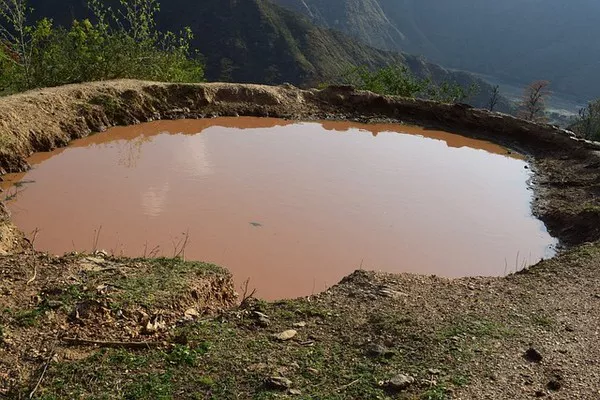Wastewater treatment is a critical process in safeguarding public health and the environment. Among the initial steps in wastewater treatment is primary treatment, which involves the removal of physical and sometimes chemical contaminants from raw sewage. Understanding what is removed during primary treatment is fundamental to comprehending the overall wastewater treatment process and its environmental significance.
1. Primary Wastewater Treatment: An Overview
The Purpose of Primary Treatment
Primary wastewater treatment serves as the first stage in the treatment process, primarily focusing on the removal of large solids and suspended particles from sewage. It is a vital step in the overall treatment process, facilitating more efficient and effective downstream treatment processes.
Processes Involved
Screening
One of the primary processes in primary treatment is screening. Wastewater passes through screens, which are designed to remove large objects such as sticks, rags, plastics, and other debris that could potentially damage equipment or impede the treatment process. These screens typically have openings ranging from a few millimeters to several centimeters in size, allowing for the efficient removal of large debris.
Grit Removal
After screening, wastewater undergoes grit removal. Grit consists of sand, gravel, eggshells, coffee grounds, and other heavy materials that settle rapidly. Grit removal prevents abrasion and damage to downstream equipment such as pumps and pipes, which could occur if these materials were allowed to remain in the wastewater stream.
Sedimentation
The final process in primary treatment is sedimentation, also known as clarification. During sedimentation, wastewater flows into large tanks where the velocity of the flow is reduced significantly, allowing suspended particles to settle to the bottom of the tank under the influence of gravity. The settled solids, known as primary sludge, are then removed for further treatment, while the clarified water undergoes secondary treatment processes.
2. What Gets Removed During Primary Treatment
Suspended Solids
Definition
Suspended solids refer to solid particles that remain in suspension in water rather than settling to the bottom. These particles can include organic matter, inorganic compounds, and microorganisms.
Removal Mechanisms
During primary treatment, suspended solids are removed primarily through the processes of screening and sedimentation. Screening removes larger suspended solids, while sedimentation allows smaller particles to settle out of the wastewater stream.
Organic Matter
Definition
Organic matter in wastewater consists of biodegradable compounds such as proteins, carbohydrates, and fats. These compounds can contribute to water pollution and serve as a food source for microorganisms, leading to biological oxygen demand (BOD) in receiving water bodies.
Removal Mechanisms
Organic matter removal during primary treatment primarily occurs through sedimentation. As organic particles settle to the bottom of sedimentation tanks as part of primary sludge, they are effectively removed from the wastewater stream.
Floatable Materials
Definition
Floatable materials include substances such as oils, grease, and fats that have a lower density than water and tend to float on the water’s surface. These materials can form scum layers, which can interfere with treatment processes and lead to aesthetic and environmental issues.
Removal Mechanisms
Floatable materials are removed during primary treatment through skimming. Skimmers are used to mechanically remove surface scum from sedimentation tanks, effectively separating these materials from the wastewater stream.
Settleable Solids
Definition
Settleable solids are suspended particles that are capable of settling under quiescent conditions. These solids can include both organic and inorganic particles that are sufficiently dense to settle out of suspension within a reasonable period.
Removal Mechanisms
Settleable solids are removed primarily through sedimentation during primary treatment. By reducing the velocity of wastewater flow in sedimentation tanks, settleable solids are allowed to settle to the bottom of the tank, where they can be removed as part of the primary sludge.
Environmental Significance of Primary Treatment
Protection of Water Quality
Primary treatment plays a crucial role in protecting water quality by removing physical and chemical contaminants from wastewater before it is discharged into receiving water bodies. By reducing the concentration of suspended solids, organic matter, and other pollutants, primary treatment helps prevent water pollution and minimize adverse impacts on aquatic ecosystems and public health.
Prevention of Equipment Damage
By removing large solids, grit, and other debris from wastewater, primary treatment helps prevent damage to downstream treatment equipment such as pumps, pipes, and biological reactors. This not only reduces maintenance costs but also ensures the efficient operation of wastewater treatment plants, maximizing treatment capacity and performance.
Facilitation of Secondary Treatment
Primary treatment sets the stage for more advanced secondary treatment processes by removing a significant portion of suspended solids and organic matter from wastewater. This facilitates the performance of biological treatment processes such as activated sludge, trickling filters, and lagoons, which rely on the biodegradation of organic pollutants by microorganisms.
Compliance with Regulations
Many regulatory agencies require wastewater treatment plants to implement primary treatment as a minimum requirement for the protection of public health and the environment. By complying with these regulations, treatment plants ensure that wastewater discharges meet prescribed effluent quality standards and do not pose undue risks to human health or the environment.
Conclusion
In conclusion, primary wastewater treatment plays a critical role in the overall treatment process by removing physical and sometimes chemical contaminants from raw sewage. Through processes such as screening, grit removal, and sedimentation, primary treatment effectively removes suspended solids, organic matter, floatable materials, and settleable solids from wastewater, thereby protecting water quality, preventing equipment damage, facilitating secondary treatment, and ensuring compliance with regulations. Understanding what is removed during primary treatment is essential for comprehending the environmental significance of wastewater treatment and the importance of safeguarding public health and the environment.

